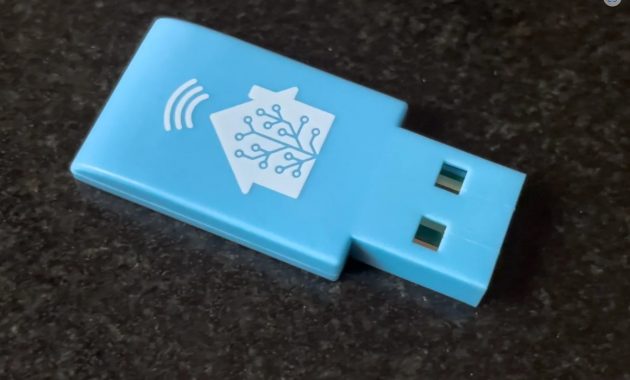
y smart home has been a mess for a while. Before writing this, it was a combination of a Hue hub and HomeKit, the former of which I was not terribly fond of having, and the latter I tolerate. But for a few years now, I have wanted to go convert my whole house to Home Assistant: the self-hosted home automation software. And now, with the SkyConnect Connect, a combination Zigbee and Matter / Thread dongle from Home Assistant, that transition is complete. In the process, however, I broke half of the stuff in my home. Nothing works, and I could not be happier.
Home Assistant, for those of you who do not follow the Smart Home nerd beat, is the almost universally accepted choice for free and open-source home automation. Unlike Apple’s HomeKit (which requires Apple devices), it can run on single-board computers like the Raspberry Pi, a Docker container, or basically any little computer you can install it on. It also lets you get very deep in the weeds with how, precisely, you want your home automated. It’s not the most intuitive choice, but it’s not that difficult, and if you’re even remotely paranoid about who has the keys to your smart home (which I am) Home Assistant is one of your better bets.
Related
What matters about Matter, the new smart home protocol
Matter products are coming — here’s everything that’s been announced
Now, aside from the issue of home security, one of the larger issues with home automation is interoperability. Out of the box, tons of smart home gadgets have not, historically, played nice together (I am looking at you, Philips Hue). That has gotten way better as the years have gone by, particularly with HomeKit and Google Home, but Home Assistant has always excelled at this because it has a very active community of nerds who want all their weird toys to play nice in deeply specific ways. If you have a switch you want to work with another device, someone has very probably spent lots of time configuring it and put that information online as a blueprint.
You may also be aware of Matter, the new standard for home automation that seeks to make a lot of these issues a whole lot easier. If you are not aware of Matter and Thread, I highly recommend The Verge’s own explainer. The rollout is still in the works, and there are not that many devices out there in the wild yet, but if it all goes to plan (big if) then there should be far fewer headaches going forward.
I wanted to get rid of that hub and have everything working in one little ecosystem
I had briefly experimented with running Home Assistant as a Docker container on my NAS (my little network device I use to store movies) a few years ago. I was very much impressed with how well it could communicate not only with my existing smart home devices but also how granularly it allowed me to program my existing devices. But the thing that kept holding me back was my Philips Hue system, which, for years, had made using anything outside of its ecosystem a chore. Until recently, Hue relied on Zigbee, a low-power mesh network standard, to have bulbs talk to each other.
As an early adopter of the Hue system, Hue has not made things easy. Despite sharing the Zigbee protocol with other bulbs and switches, getting them to play nice with them has historically been like pulling teeth. For example, Ikea has its own smart home system, complete with its own hub and app and everything (hey look, it has one with Matter now!), but a few years back, having them play nice involved a lot of weird workarounds. Of course, there are great workarounds and integrations I could use, like Zigbee2MQTT, the Philips Hue integration, and now, Matter. But it was the principle of the thing: I wanted to get rid of that hub and have everything work in one little ecosystem. I wanted a new start. This is where the SkyConnect comes in.
Philips Hue Bridge device shown wall-mounted above a table, near a lamp.
I wanted to avoid having to use multiple Zigbee hubs like the Hue Bridge just to control some of my lights. Image: Philips Hue
Adding Zigbee (or even Z-Wave) to Home Assistant is not new. Tons of USB dongles, like the ConBee II, already exist. The SkyConnect is novel in that it adds both Zigbee and Thread / Matter support, and while I do not have Matter devices in my home, knowing that it is partially futureproofed and manufactured to work directly with Home Assistant itself was enough impetus for me to preorder. It’s a great excuse to take the plunge and have a fresh start. Another option for adding Matter and Zigbee is the Home Assistant Yellow, a robust little board that uses a Raspberry Pi Compute Module 4, but I do not have access to a CM4, so I went with the dongle.
Now normally, I would just run this as a Docker container on my NAS, but I had no idea if the dongle was even compatible, and I thought it best to dedicate an entire device to running my home. Luckily, I had recently replaced a network of Raspberry Pis with WiiM streaming pucks, so I had a few Raspberry Pi 4Bs lying around (if you are still struggling to find one, rpilocator is a great tool). It was time to get serious. Installing Hass.io (Home Assistant’s OS) is a breeze if you have ever done anything remotely complicated with a Raspberry Pi; you just